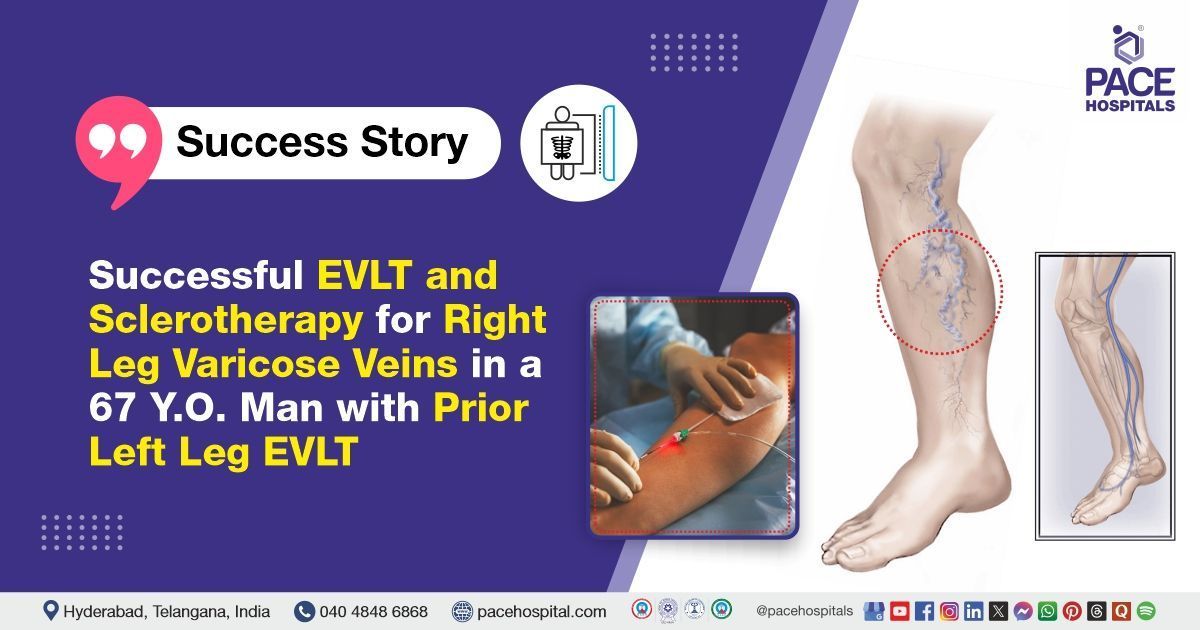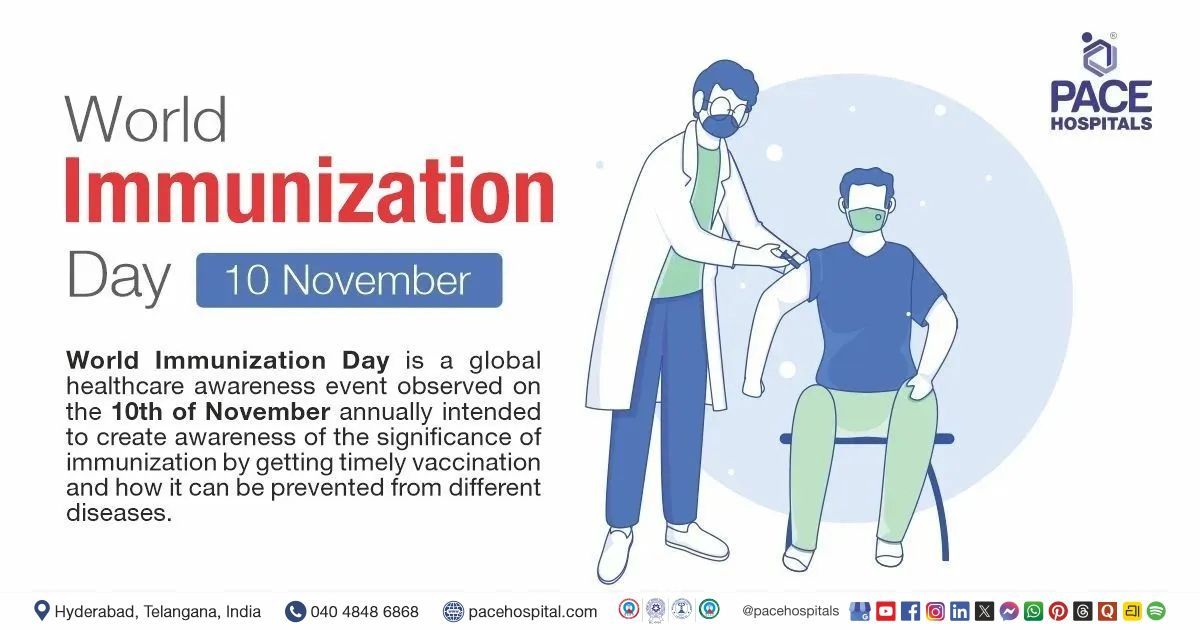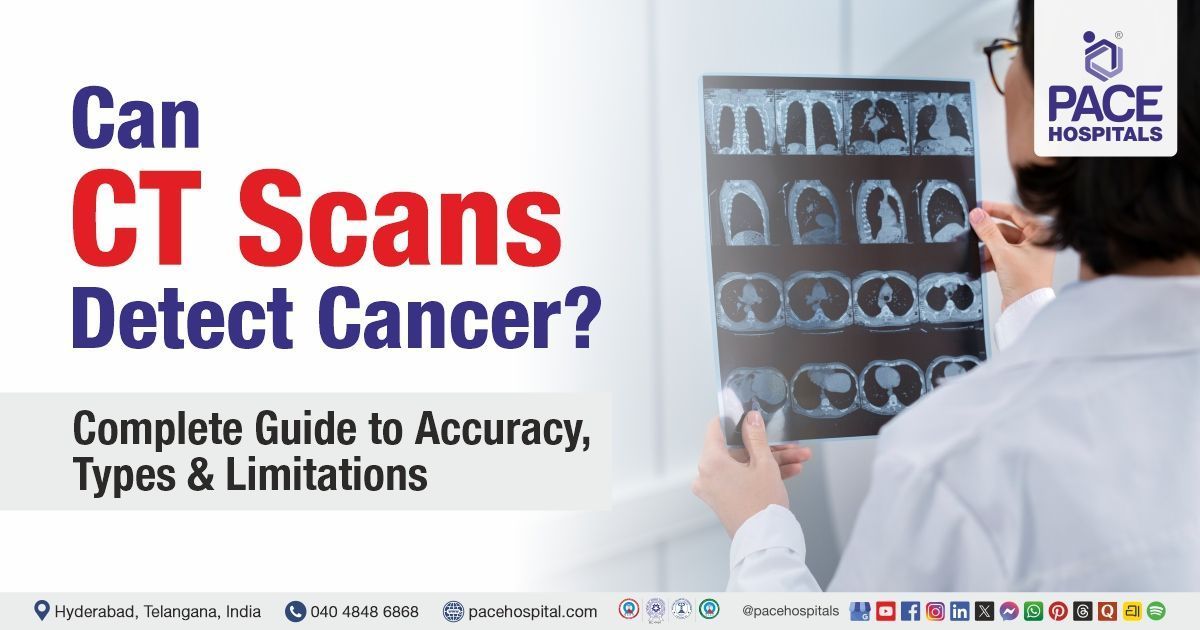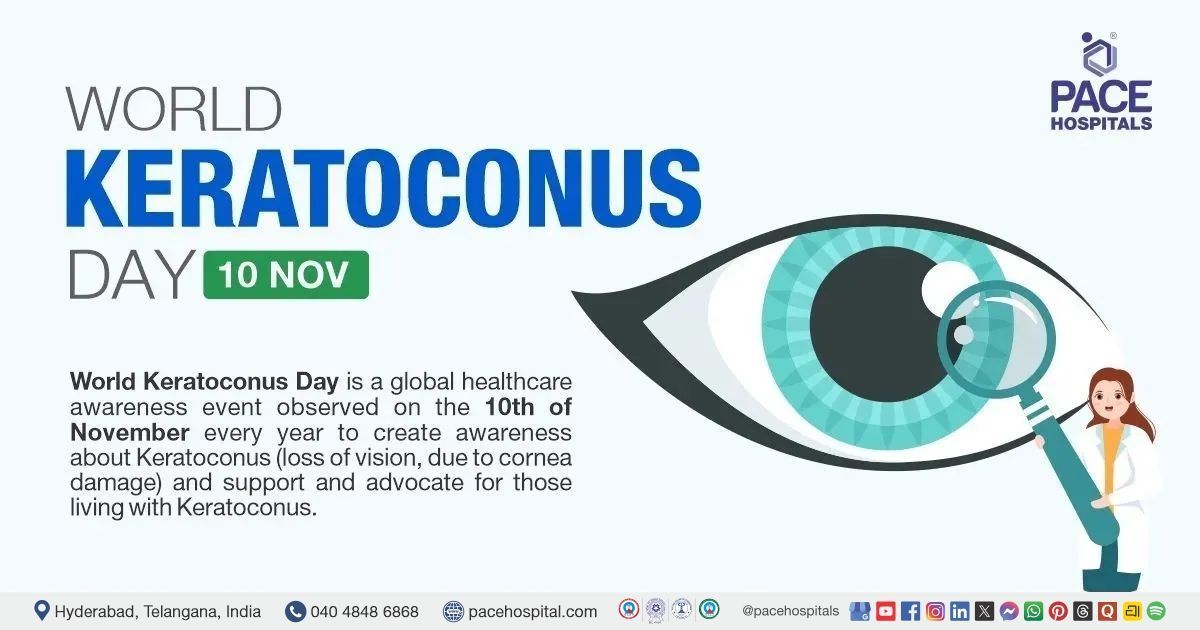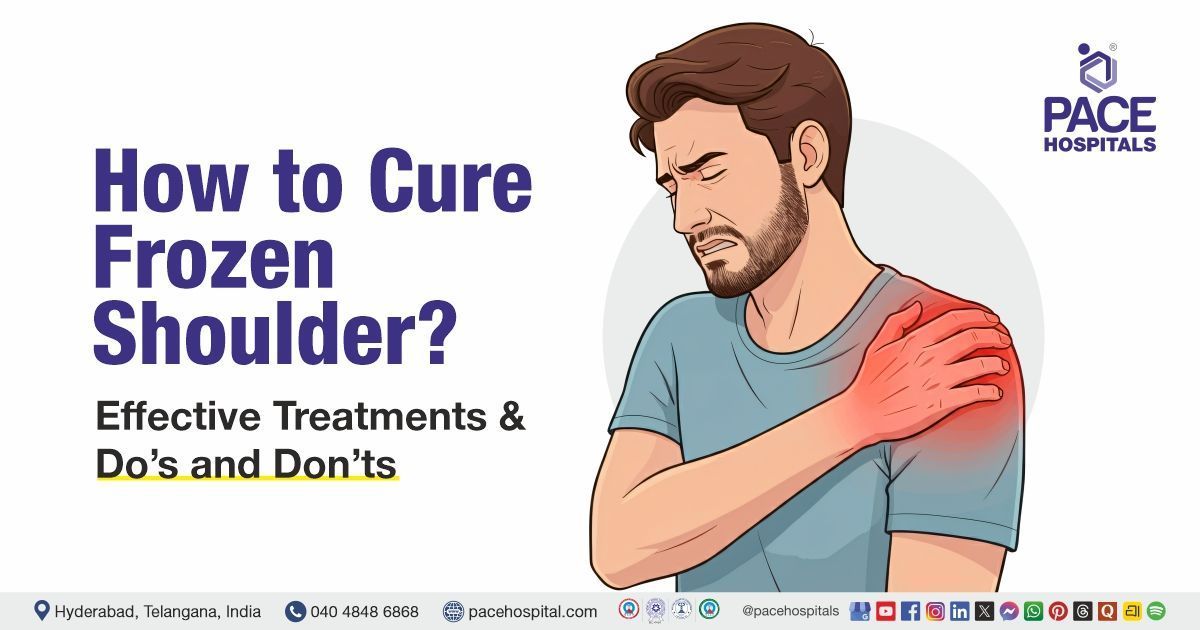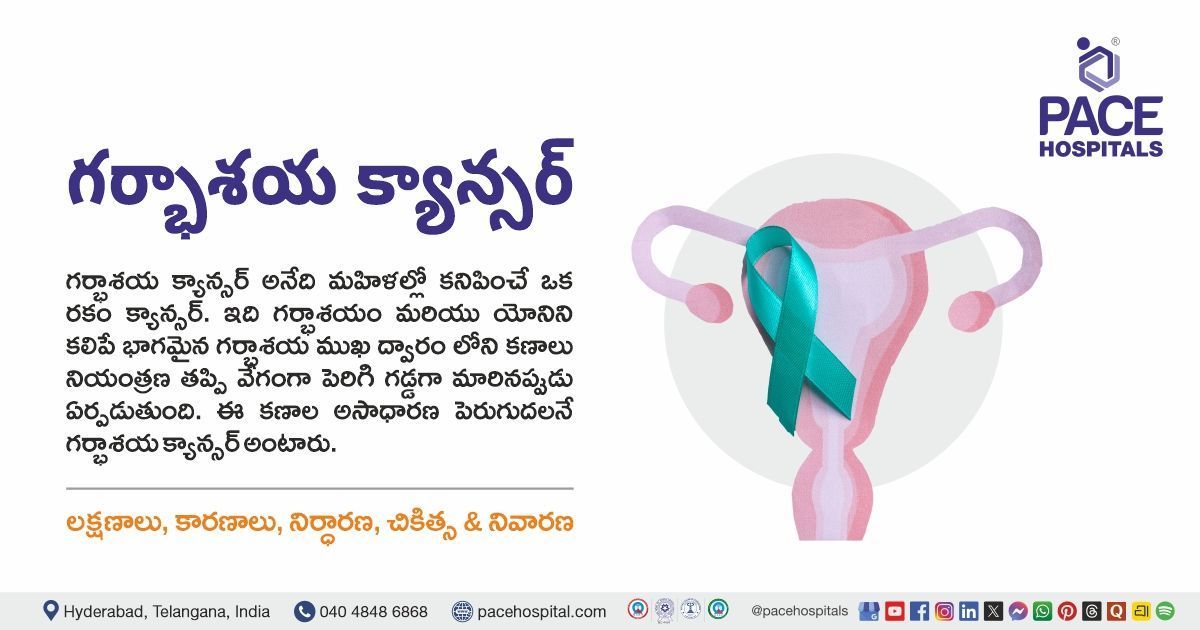EVLT and Sclerotherapy for Right Leg Varicose Veins in a 67 Y.O. Man
PACE Hospitals
PACE Hospitals Expert Interventional Radiology Team successfully performed Endovenous Laser Therapy (EVLT) and Sclerotherapy on a 67-year-old male patient with Varicose Veins in the right lower limb who presented with dilated veins and swelling in the right leg. These minimally invasive procedures were carried out to relieve symptoms such as swelling, prevent further complications, and improve the patient’s mobility and quality of life.
Chief Complaints
A 67-year-old male patient with a
Body Mass Index (BMI) of 23 presented to the Interventional Radiology Department at
PACE Hospitals, Hitech City, Hyderabad, with the complaints of dilated veins and swelling in the right leg.
Past Medical History
The patient had previously undergone Endovenous Laser Therapy (EVLT) for varicose veins in the left leg.
On Examination
Upon admission to PACE Hospitals, the patient was hemodynamically stable. Cardiovascular and respiratory examinations were normal, with normal heart sounds (S1, S2) and adequate bilateral air entry. Abdominal examination was normal, with a soft and non-tender abdomen. Examination of the right lower leg revealed enlarged, superficial veins consistent with varicose veins, along with mild swelling.
Diagnosis
Following the clinical examination, the Interventional Radiology team conducted a comprehensive assessment, which included a detailed review of the patient’s medical history and a focused clinical evaluation. A color Doppler ultrasound was performed to assess venous reflux, valve competence, and the extent of venous dilation.
Imaging studies revealed incompetence of the superficial venous system, with findings more pronounced in the right lower limb. Taking into account the patient's clinical symptoms, physical examination findings, and Doppler ultrasound results, a provisional diagnosis of right lower limb varicose veins with incompetent perforator veins was established.
Based on the confirmed diagnosis, the patient was advised to undergo
Varicose Veins Treatment in Hyderabad, India, under the care of the Interventional Radiology Department, to ensure comprehensive management of his condition.
Medical Decision Making
After consultation with Dr. Lakshmi Kumar Chalamarla, Interventional Radiologist, a thorough evaluation was undertaken to determine the most suitable diagnostic and therapeutic strategy for the patient's venous condition. Following a detailed assessment, including clinical correlation and imaging findings, it was concluded that conservative management alone would be insufficient.
Based on their expert assessment, it was concluded that Varicose vein surgery would be the most effective procedure to address the patient’s condition.
The patient and his family were thoroughly counselled about the severity of the condition, the planned surgical procedure, potential risks, and the necessity for surgery.
Surgical Procedure
Following the decision, the patient was scheduled to undergo Endovenous Laser Therapy (EVLT) and Sclerotherapy Surgery in Hyderabad at PACE Hospitals under the supervision of the expert Interventional Radiology Department. The following steps were carried out during the procedure:
The procedure was performed under spinal and tumescent anaesthesia. After ensuring adequate anaesthesia, the following steps were carried out:
- Access and Ablation of Right Great Saphenous Vein (GSV): The right GSV was accessed and ablated using a laser radial fibre from just above the ankle to approximately 6 cm proximal to the saphenofemoral junction (SFJ). Proper positioning and fiber tracking were confirmed under ultrasound guidance throughout the procedure.
- Access and Ablation of Right Small Saphenous Vein (SSV): Similarly, the right SSV was identified and ablated using the same technique, starting from the apex of the calf up to approximately 4 cm proximal to the popliteal fossa.
- Foam Sclerotherapy: Residual varicosities in the right leg were treated using foam sclerotherapy with anionic surfactant. The foam was injected directly into the affected superficial varicosities under ultrasound guidance to ensure accuracy.
- Haemostasis and Dressing: Haemostasis (stopping of blood flow) was carefully secured at all access points. The treated limb was then wrapped with compression dressings using crepe bandages to support post-procedure venous return and reduce the risk of complications. The surgery was completed successfully without intraoperative complications.
Postoperative Care
The postoperative period was uneventful. The patient was monitored in the ICU and remained hemodynamically stable throughout. He received intravenous antibiotics, analgesics, anticoagulants, proton pump inhibitors, and supportive care. Symptomatic improvement was noted with no complications. The patient was discharged in stable condition with post-discharge care instructions and follow-up advice.
Discharge Medications
Upon discharge, the patient was prescribed oral antibiotics to prevent infection and proton pump inhibitors for gastric protection. Analgesics were given for pain relief, and antipyretics were provided to control fever. Anticoagulants were prescribed to lower the risk of blood clots following the vein treatment. Additional supportive care measures were recommended to promote healing and prevent complications. The patient was advised to follow the medication plan and attend scheduled follow-up visits.
Advice on Discharge
The patient was advised to avoid crossing the legs and to limit prolonged standing or sitting to no more than 30 minutes at a time. He was also advised to refrain from lifting weights heavier than 5 kilograms for one week. Additionally, the patient was instructed to wear above-knee Class II compression stockings during the daytime for a period of two months.
Emergency Care
The patient was informed to contact the emergency ward at PACE Hospitals in case of any emergency or development of symptoms like fever or leg swelling or severe leg pain or chest pain or breathlessness.
Review and Follow-Up Notes
The patient was advised to return for a follow-up visit with the Interventional Radiologist in Hyderabad at PACE Hospitals, after 14 days. During this visit, his recovery would be assessed to evaluate the treatment outcome and determine if any further management was necessary.
Conclusion
This case highlights the effective management of varicose veins and incompetent perforators through Endovenous laser ablation combined with foam sclerotherapy. It emphasizes the importance of accurate diagnosis and individualized treatment planning in achieving optimal outcomes for patients with chronic venous insufficiency.
Integrating Minimally Invasive Techniques for Enhanced Patient Outcomes in Varicose Vein Treatment
This case highlights the evolving role of combining Endovenous laser ablation with foam sclerotherapy as a synergistic approach for the treatment of complex varicose veins and incompetent perforators. The expertise of the interventional radiologist/interventional radiology doctor is pivotal in precisely targeting both truncal veins and residual varicosities, leading to improved symptom relief and reduced recurrence rates. Moreover, the minimally invasive nature of these procedures significantly decreases hospital stay and postoperative discomfort, facilitating faster recovery. This integrative treatment strategy exemplifies advancements in vascular care that prioritize efficacy, safety, and patient quality of life.
Share on
Request an appointment
Fill in the appointment form or call us instantly to book a confirmed appointment with our super specialist at 04048486868

